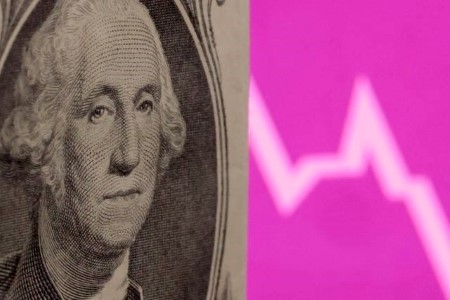




Quarterly Economic Growth Release: More BSP cuts to come
 DOWNLOAD
DOWNLOAD

Monthly Economic Update: Fed catches up
 DOWNLOAD
DOWNLOAD

Inflation Update: Steady and mellow
 DOWNLOAD
DOWNLOAD


Sickly dollar leaves shrinking pool of safe havens

LONDON – Foreign exchange traders often describe the US dollar as the “least dirty shirt” in the laundry basket. But President Donald Trump’s tariffs have tarnished the currency’s status as a preferred choice in a crisis. The Swiss franc and Japanese yen are alternative beneficiaries. Still, in a global downturn there are few places for investors to hide.
In previous crises like the 2008 financial meltdown and the 2020 Covid pandemic, investors reflexively reached for the relative safety of the greenback. In the months after Trump’s re-election, traders pumped up the value of the American currency in the expectation that his policies would unleash economic growth. Even on the eve of the president’s tariffs announced on April 2, economists and investors expected that levies on US imports would lead to a stronger dollar.
That hasn’t happened. The day after Trump’s self-professed “Liberation Day” the greenback lost nearly 2% of its value against a basket of major trading partners, and has since failed to fully recover. Growing fears that a trade war would lead to a US recession and lower interest rates have weakened its appeal. Trump’s erratic policymaking has also shaken investors’ faith in US assets.
Yet investors looking for alternatives have received mixed signals from markets. Gold has historically been a refuge from financial turmoil but the spot price of the yellow metal, which had risen by almost a fifth since the beginning of the year, has tumbled since Trump’s announcement. That may be because traders and hedge funds are selling assets to cover losses elsewhere.
The Swiss franc and Japanese yen are relative winners. Both currencies have strengthened against the dollar, even though their economies are on the receiving end of bigger-than-expected tariffs. Meanwhile, the euro has been a surprise beneficiary. The single currency region faces extra tariffs of 20%, threatening 532 billion euros of exports to the US Yet the euro jumped 1.8% against the dollar on April 3 – its biggest daily rise since November 2022. Again, the lack of alternatives may be helping.
The next wave may be equally unpredictable. If tariffs push up prices, Federal Reserve Chair Jerome Powell may have to keep rates elevated, supporting the greenback. Gold too, may thrive in an inflationary environment.
Even if the dollar rout resumes, not all havens will remain equally appealing. If investors truly abandon the dollar, then rival currencies could shoot up. That would put pressure on other central banks to counter rising exchange rates, as the Swiss did during the euro zone crisis in 2011. The euro zone, meanwhile, could get caught in a wave of tit-for-tat tariffs which would damage its economy and currency. In a truly global crisis, there are no clean shirts.
CONTEXT NEWS
Investors on April 7 pushed up the value of the Japanese yen and Swiss franc as the market rout triggered by US President Donald Trump’s sweeping tariffs deepened and fears of a global recession grew.
The Swiss franc strengthened by almost 1% against the US dollar in European morning trading to 0.8525, extending its surge against the greenback the previous week. The Japanese yen was trading 146 against the dollar, a change of 0.5%.
The US dollar Index was down 0.13%. It has fallen by more than 1% since April 2, when Trump announced tariffs on most of America’s trading partners.
(Editing by Peter Thal Larsen and Streisand Neto)
This article originally appeared on reuters.com





 By Reuters
By Reuters